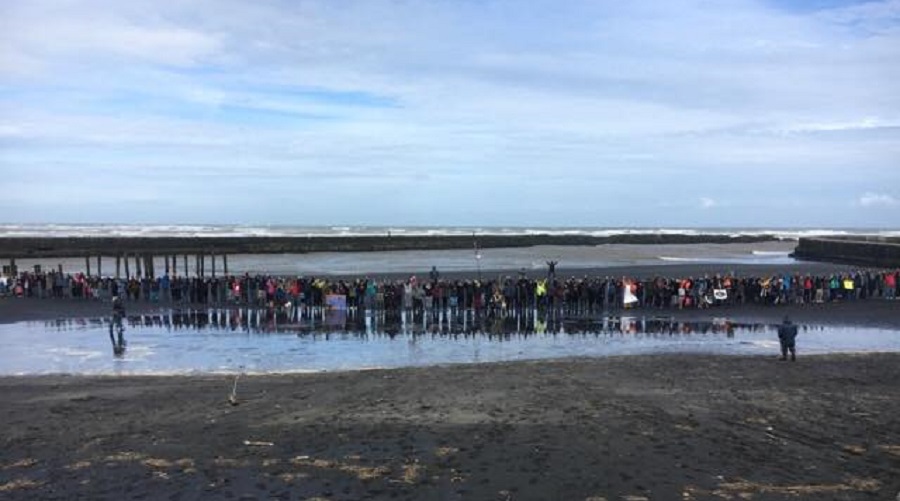
Leaders of New Zealand’s Green Party, activists, students and concerned citizens protested this week against Trans-Tasman Resources’ plans to mine iron sands from the seabed of South Taranaki Bight, located 22 kilometres to 36 kilometres offshore from Patea.
Both at the rally and in a written statement, MP James Shaw said that the Green Party has drafted a strategy to prevent the extractive activity from taking place. According to Shaw, the idea is to “create New Zealand’s largest marine mammal sanctuary,” which would “protect a blue whale feeding ground off the South Taranaki coast from destructive activities, including seabed iron sands mining.”
Local media reports that the designation of the 30,000-square-km South Taranaki Whale Sanctuary would allow for existing oil wells to continue to operate until their permits expire, but would prohibit new prospecting, exploration and mining for minerals.
“Iron sand seabed mining vacuums up the seabed, filters out minerals, and then dumps the mud back into the ocean. For the whales, it’s like someone dumping the contents of a vacuum cleaner onto their dinner plates,” Shaw said.
The MP also stated that Trans-Tasman’s project would not create jobs. “It’s a fly-in and fly-out operation and very little of the revenue actually stays in the area. And in fact, in the business case, there isn’t even that much revenue associated with the project,” he told Stuff.
Together with the Greens, some 200 people gathered and formed a human chain at Hawera’s Waihi Beach. Seventy of them were school children, who expressed concern over the fate of the critically endangered Antarctic blue whale, as well as for that of the 37 other species of whales, dolphins, and porpoises that inhabit the South Taranaki Bight.
In a split decision issued in early August, New Zealand’s Environmental Protection Agency decided to allow TTR to dredge 50 million tonnes of sand a year from the country’s Exclusive Economic Zone. Out of this grand total, the company would get five million tonnes of iron ore per year.
The South Taranaki Bight has reported JORC iron sand mineral resources of 1,698Mt at 11.16% Fe2O3 for the Mine Area and adjacent Kupe Blocks at a 3.5% Davis Tube Recovery cutoff and a further 2,137Mt at 9.66% Fe2O3 for Stage 2 Block mine areas.
2 Comments
Garret
What isn’t said in this article is that the Green Party is polling at 5% in New Zealand and their protests mean nothing. This project will go ahead and it will open the door for other iron sand, phosphate and alluvial gold projects off the coast of NZ. The next mining boom is here, and its on the seabed of New Zealand!
Night Rider
That is really low grade stuff, which explains the comment “And in fact, in the business case, there isn’t even that much revenue associated with the project”. So why do it???